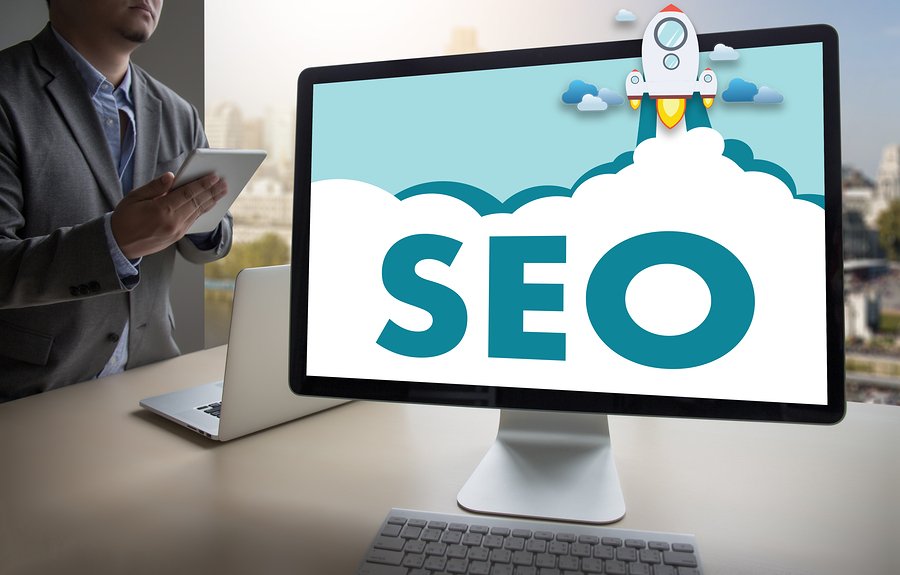The Top 10 Benefits of Social Media Marketing in 2018
If your enterprise is still at the point where you require convincing over social media’s viability, then you are comfortably behind the eight ball. The competition has already accepted these online platforms for what they offer their business and the results speak for themselves.
In 2018, hubs like Facebook, Twitter, Instagram, Google+, Pinterest, LinkedIn, YouTube and Snapchat are untapped channels of potential. Not only are they free to set up, but they act as gateways to a new wave of consumers who have developed their own habits of consuming media and the marketing messages that pay for the content.

2018 is going to be a big year for social media!
Given that there are two ends of the spectrum – those that are completely sold on social media’s influence, and others that cannot fathom the concept, there are those caught in the middle. Perhaps they have established a Facebook page or issued a link to their Twitter handle, but it has remained dormant.
This is an opportunity now to re-engage and re-energise your efforts. Scan the internet and examine those in your niche that are finding ways of involving their customers in their operation.
Social media should not be thought about as a tool that garners revenue artificially, but merely reflects how a company operates day to day. There needs to be a sense of enthusiasm, understanding and appreciation for the services that are provided. Should those boxes be ticked, then the potential to cash in and build momentum is limitless.
These are the top 10 benefits social media can bring to your business in 2018:
1. A Human Face and Voice
It is not too much of a stretch to say that brands are often viewed as vacuous properties whose only goal is to exist for profit. That might be an overly cynical perspective, but this has been born out over a series of decades ranging from a variety of socioeconomic and cultural factors.
This is where social media can be a presence for good to combat this notion. The reality is that all organisations big and small are developed, run and cared for by everyday people, making it a necessity to highlight the human element within “the brand.”
Now this is touching on an endless debate that has raged for the best part of a decade – should companies behave like people online? To what degree do we humanise our presence on these platforms?
On one side of the debate is Snapchat co-founder Evan Spiegel who argued that social media accounts should not act as “your buddy.” This followed a push by the likes of Cole & Weber United director Britt Peterson who published an article in Forbes to say that brands must develop a character to succeed.
Yet Entrepreneur’s Jackie Johnstone put it best when she explained that the professional and conventional approach is a quick way of losing traction. As Johnstone states, it is best to grab the smartphone and shoot a video or take a group selfie and publish the content. Social media is the best tool to showcase a human voice and face to your operation.
2. Increases Communication Pathways

Social media acts as another form of communication with customers.
Take your company hat off for just one moment. Consider the most frustrating elements of contacting a business from a customer’s perspective. There might be a few issues that jump to mind, but one that should crop up is the ability to communicate directly to the organisation.
From general enquiries to product or pricing questions, it is imperative that an enterprise has the capacity to listen, understand and engage with their consumers as fast as humanly possible.
This gives social media an added layer of importance to be a free and easy method of customer service. Rather than the need to have a phone line open 40 hours a week or have a convoluted message board on a contact tab of a webpage, an enquiry can be sent and responded to in minutes.
That instantaneous two-way communication will be respected by a majority of consumers. A site like Facebook will also inform users about the response rate of various pages, giving them a sense of which operations take their social media seriously.
3. Boost to Brand Awareness
Reaching a large audience can be one of the toughest tasks facing any marketing professional. There are the usual channels that traditional outlets have operated in for decades, from television to print advertising and radio. While they still have their merits, there is a plethora of online users active throughout social media.
Those that are regular daily, weekly or monthly visitors will likely never come across your brand with a general Google search or from a traditional form of advertising. Having a social media presence across a variety of platforms will naturally boost brand awareness by placing yourself in the same space your peers operate in.
Better yet, there is every chance that they won’t have a space or are using it without the right amount of consumer engagement. Brand awareness might be a common marketing 101 buzzword, but it is a facet of business that leads to tangible growth metrics. Awareness leads to a change in consumer habits which builds loyalty and long-term customers, so the investment in the concept is worth it.
4. Develop Corporate Partnerships

With social media, you can easily form corporate partnerships.
The notion of co-marketing might not be top of the agenda, but joining forces for a campaign that combines your efforts can double the dividend. Social media is littered with examples of brands leveraging strategic partnerships online to boost their own numbers and tap into an audience that are looking for something extra.
Some well-known examples include:
- Uber and Spotify
- Red Bull and GoPro
- Lucasfilm and CoverGirl
- Apple and Nike
- Starbucks and Lady Gaga
The latter example was a case of the pop star using the reach of the coffee giant to bring attention to a charitable cause. Through their campaign #cupsofkindness, both brands managed to raise funds for youth empowerment through her foundation Born This Way.
Shared economy app Uber recognised the popularity of Spotify and wanted to tap into a music hub that improved the passenger experience. This was a clever way of acknowledging a service that was complimentary to their own and partnered with the streaming giant to improve the standing of both properties.
Social media’s role in these partnerships is to cross-promote and drive the shared campaigns. They also act as easy points of research to gauge how many followers the other party has.
5. Geographic and Demographic Targeting
Directing a targeted campaign or marketing message can be executed so much easier with the help of social media. The very concept of marketing is to drive a brand’s product or service to a select group of people who can be swayed and convinced to buy in.
Thanks to the software applications that are at the disposal of Facebook, Twitter and Instagram, gone are the days when a message is lost to a segment of the population that were never interested in the first place.
A paid Facebook advertisement is the best example of this geographic and demographic targeting, whereby the location and profile of the user is pre-selected. That makes a world of difference across all niches.
If you run an operation, you will already have inherent knowledge as to your target market. What social media enables you to do is create campaigns that feed that specific demographic instantaneously.
6. Improvement of SEO Status

Social media and SEO work well together.
Search engine hubs like Google have been forced to recognise and acknowledge the growing influence social media plays in modern culture. Much like a number of grand organisations, the common consensus a decade ago was that there was little to no commercial benefit from these platforms. Now they are core methods of obtaining organic traffic – one of the top search engine optimisation (SEO) indicators.
Given the millions of monthly active social media users in Australia alone, search engines have to trace where the traffic flows from. This interconnectivity has established a relationship between these parties to the point where hits gleaned from social media profiles become part of the marketing model.
Put simply – a strong social media presence strengthens your hand at SEO. Should you focus on improving your SEO or social media performance, chances are you are doubling your efforts without even realising it.
7. Become an Intellectual Authority in Your Niche
There is so much more to an enterprise’s existence than just the need to sell product and increase the share price. Should you be passionate about the company in question and are committed to domains like consumer engagement, then it is worth investing time, energy and resources into producing content that informs.
Take property guru Mark Bouris for example. The Sydney-based businessman is the Executive Chairman of Yellow Brick Road, but rather than sit by passively as his marketing team formulate their own strategies, he is using social media to proactively bring his followers up to speed on domestic small business matters.
Whether it be his column in the Sydney Morning Herald or interviews with key politicians via PodcastOne, Bouris is a shining example of an intellectual authority who rose to that status through conventional methods. He utilised his public profile to update, explain and analyse matters that are important to his customers, and those figures have risen ever since.
8. Customers and Employees Transition To Advocates and Testimonials

Social media assists in creation feedback and testimonials for your brand.
Due to social media’s vast reach and amount of users, it is not difficult to duplicate efforts that begin with the central account. Those customers who engage you on the feed can be given a retweet, a share or some other kind of acknowledgement online.
Employees can also be given duel responsibilities whereby they give their own followers a positive perception about your enterprise. There is no need just to limit your message to one location when there are so many more avenues to exploit. One clever method is to offer a discount or prize to add incentives for future testimonials.
9. Costs Kept Under Control
Social Champ undertook some internal research to see exactly how affordable or otherwise social media really was. What they would find should leave no business owner in any doubt – an efficient campaign online beats all other outlets comprehensively.
For an audience reach of 2000 people, they discovered on average how much money has to be spent through the following channels:
- Broadcasting – $150
- Newspaper – $250
- Magazine – $500
- Direct mail – $900
- Social networking – $75
- Search (Google) – $50
Should you be savvy in your implementation, then tapping into a vast community of consumers is far more affordable than the alternative options. There is no niche that should overlook this dimension because the revenue saved on marketing can be reinvested back into experimental operations of the business.
10. Knowledge of Consumer Habits and Practices
One of the facets of marketing that often goes unnoticed or overlooked is the necessity to understand consumer habits. Having the knowledge of where, how and who visits your site is expertise that would require thousands in investment outside of social media portals.
Facebook’s advertisements will issue comprehensive data as to the amount of impressions that are garnered from a campaign as well as the click-through rate. They will also break down the geographic location and profiles of the visitors.
That is intelligence that cannot be underestimated. A majority of other marketing endeavours through traditional outlets are simply unable to issue that degree of detail, placing greater emphasis on the importance of social media.
How do you think social media will change in 2018? Let us know in the comments section below, we would love to hear your thoughts!

Read ➡ Little Known Advantages of SEO

We are a friendly and reliable team that pays detailed attention to your projects and management of your brand. Our team at SEO Shark has a passion for all things online. We constantly innovate using the latest professional techniques and strategies.



